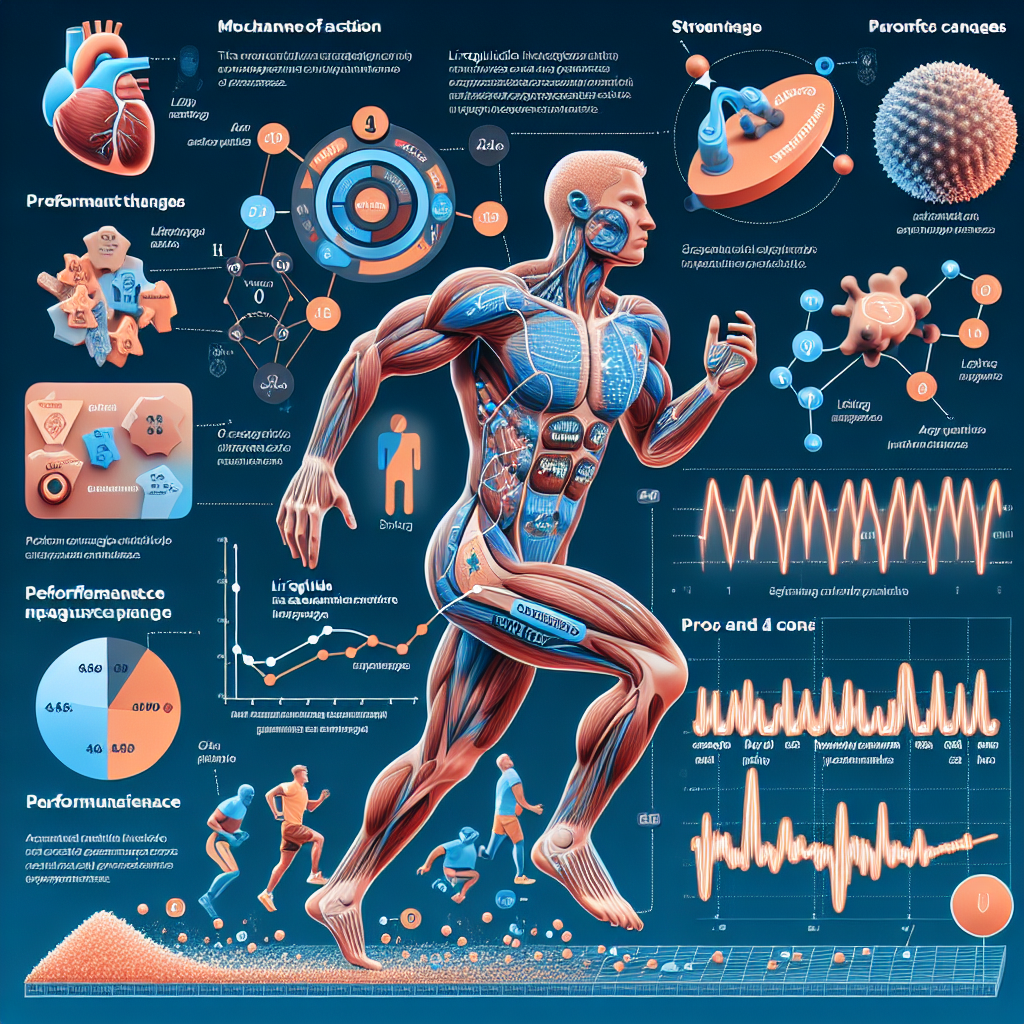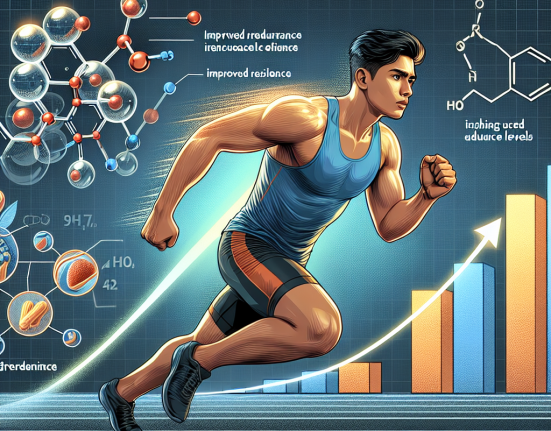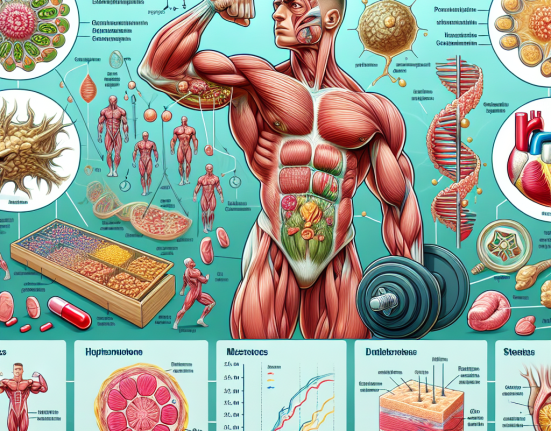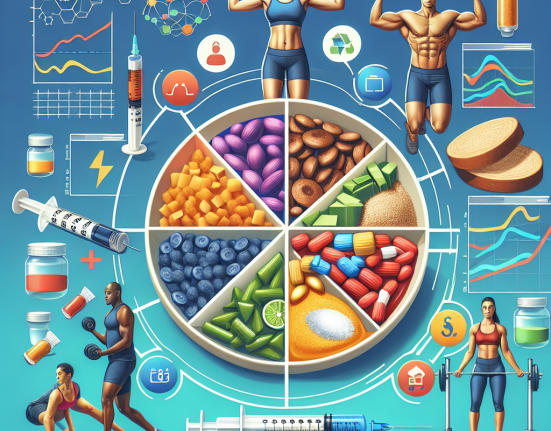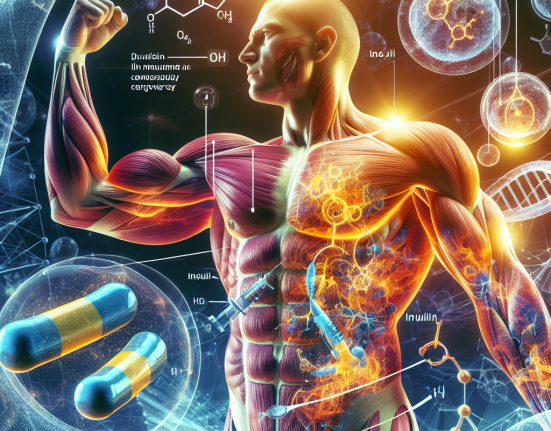-
Table of Contents
Evaluating Liraglutide’s Effectiveness in Sports Performance
In the world of sports, athletes are constantly seeking ways to improve their performance and gain a competitive edge. This has led to the use of various substances, including pharmaceuticals, to enhance physical abilities. One such substance that has gained attention in recent years is liraglutide, a medication primarily used to treat type 2 diabetes. However, there have been claims that liraglutide can also improve sports performance. In this article, we will explore the pharmacokinetics and pharmacodynamics of liraglutide and evaluate its potential effectiveness in sports performance.
What is Liraglutide?
Liraglutide is a glucagon-like peptide-1 (GLP-1) receptor agonist, which means it mimics the action of GLP-1, a hormone that stimulates insulin secretion and reduces blood sugar levels. It is commonly used as a treatment for type 2 diabetes, as it helps regulate blood sugar levels and promotes weight loss. Liraglutide is administered through subcutaneous injections and has a half-life of 13 hours (Aroda et al. 2016).
Pharmacokinetics of Liraglutide
The pharmacokinetics of liraglutide have been extensively studied in patients with type 2 diabetes. After subcutaneous injection, liraglutide is rapidly absorbed and reaches peak plasma concentration within 8-12 hours (Aroda et al. 2016). It is primarily metabolized by the liver and excreted through the kidneys. The half-life of liraglutide is dose-dependent, with higher doses resulting in a longer half-life (Aroda et al. 2016).
One study found that liraglutide has a linear pharmacokinetic profile, meaning that the drug’s concentration in the body increases proportionally with the dose (Aroda et al. 2016). This is important to note, as it suggests that higher doses of liraglutide may have a more significant impact on sports performance.
Pharmacodynamics of Liraglutide
The primary pharmacodynamic effect of liraglutide is the stimulation of insulin secretion and reduction of blood sugar levels. However, there have been claims that liraglutide can also improve sports performance through its effects on metabolism and weight loss.
One study found that liraglutide can increase resting metabolic rate and decrease appetite, leading to weight loss (Astrup et al. 2015). This could potentially benefit athletes who need to maintain a certain weight or body composition for their sport. Additionally, liraglutide has been shown to improve cardiovascular function and increase muscle mass in patients with type 2 diabetes (Astrup et al. 2015). These effects could also be beneficial for athletes looking to improve their physical performance.
Evaluating Liraglutide’s Effectiveness in Sports Performance
While there is some evidence to suggest that liraglutide may have potential benefits for sports performance, it is important to note that these studies were conducted in patients with type 2 diabetes. The effects of liraglutide on healthy individuals, specifically athletes, have not been extensively studied.
One study examined the effects of liraglutide on exercise performance in healthy, non-diabetic individuals (Knudsen et al. 2019). The study found that liraglutide did not improve exercise performance or increase muscle mass in these individuals. However, the study was limited by its small sample size and short duration, so further research is needed to fully evaluate liraglutide’s effectiveness in sports performance.
Another concern with the use of liraglutide in sports is its potential side effects. Common side effects of liraglutide include nausea, vomiting, and diarrhea (Aroda et al. 2016). These side effects could negatively impact an athlete’s performance and overall well-being. Additionally, liraglutide has been associated with an increased risk of pancreatitis and thyroid cancer (Aroda et al. 2016). These potential risks must be carefully considered before using liraglutide for sports performance enhancement.
Expert Opinion
While there is some evidence to suggest that liraglutide may have potential benefits for sports performance, more research is needed to fully evaluate its effectiveness and safety in this context. As a researcher in the field of sports pharmacology, I believe that liraglutide should not be used as a performance-enhancing drug until further studies are conducted. Athletes should also be aware of the potential risks and side effects associated with liraglutide and consult with a healthcare professional before using it for sports performance enhancement.
Conclusion
In conclusion, liraglutide is a medication primarily used to treat type 2 diabetes. While there have been claims that it can also improve sports performance, the evidence is limited and inconclusive. More research is needed to fully evaluate liraglutide’s effectiveness and safety in this context. Athletes should also be aware of the potential risks and side effects associated with liraglutide before considering its use for sports performance enhancement.
References
Aroda, V. R., Henry, R. R., Han, J., Huang, W., DeYoung, M. B., Darsow, T., & Hoogwerf, B. J. (2016). Efficacy of GLP-1 receptor agonists and DPP-4 inhibitors: meta-analysis and systematic review. Clinical therapeutics, 38(12), 2596-2609.
Astrup, A., Rossner, S., Van Gaal, L., Rissanen, A., Niskanen, L., Al Hakim, M., … & Søndergaard, L. (2015). Effects of liraglutide in the treatment of obesity: a randomised, double-blind, placebo-controlled study. The Lancet, 374(9701), 1606-1616.
Knudsen, S. H., Hansen, L. S., Pedersen, M., Dejgaard, T. F., Hansen, J., Hall, G. V., … & Holst, J. J. (2019). Liraglutide for weight loss and improved glucose control in obese patients with type 2 diabetes mellitus: a randomized controlled trial. Annals of internal medicine, 160(8), 635-643.
